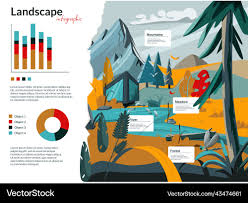Landscaping is more than just planting a few flowers or trimming the lawn; it’s about creating an outdoor environment that enhances the beauty, function, and value of your property. Whether you have a small backyard or a sprawling estate, the right landscaping can turn any outdoor space into a relaxing oasis, a place for entertaining, or an extension of your living area.
Here’s what you need to know about landscaping:
The Importance of Landscaping
Curb Appeal: A well-landscaped property can significantly improve your home's curb appeal. First impressions matter, and a beautiful, well-maintained yard can set your property apart from others in the neighborhood.
Environmental Benefits: Proper landscaping can contribute to the environment by reducing soil erosion, improving air quality, and promoting biodiversity. Thoughtful use of native plants, trees, and shrubs can also conserve water and provide a habitat for wildlife.
Property Value: Investing in landscaping can increase the value of your property. Well-designed landscapes often provide a high return on investment, making your home more attractive to potential buyers.
Personal Enjoyment: Landscaping transforms your yard into a space you can enjoy year-round. Whether it's a peaceful garden, a space for entertaining, or a playground for children, your outdoor area becomes a personal retreat.
Key Elements of Landscaping
Planning and Design: Successful landscaping starts with a plan. Before planting, consider the layout of your space, the purpose of your landscape, and how the climate, soil, and sunlight will affect plant growth. Hiring a landscape designer can help ensure that your vision is cohesive and realistic, while DIY enthusiasts can benefit from online resources and gardening guides.
Plants and Trees: Plants and trees form the backbone of any landscape. Selecting the right mix of perennials, annuals, shrubs, and trees is essential for creating a vibrant, seasonal display. Native plants are often a smart choice, as they are better adapted to local conditions and require less maintenance.
Hardscaping: Hardscaping refers to the non-living elements of your landscape, such as patios, walkways, retaining walls, and water features. Hardscape elements not only add structure and function to your landscape but also provide contrast and visual interest.
Lawn Care: A lush, green lawn is often the centerpiece of a landscape. Regular mowing, fertilizing, aerating, and watering are essential for maintaining a healthy lawn. Consider sustainable practices like xeriscaping (drought-resistant landscaping) if you live in a dry climate or want to reduce water use.
Irrigation and Drainage: Proper watering is critical for the health of your plants and lawn. Installing an irrigation system can help automate watering and reduce waste. Additionally, good drainage is essential to prevent water buildup that can damage your plants and hardscapes.
Lighting: Outdoor lighting adds ambiance and extends the usability of your space into the evening hours. Whether it’s highlighting trees, illuminating pathways, or adding drama to water features, well-placed lighting enhances safety and aesthetics.
Popular Landscaping Trends
Sustainable Landscaping: Eco-friendly landscaping practices are becoming more popular as homeowners seek to reduce their environmental impact. This includes using native plants, reducing lawn areas, installing rain gardens, and using recycled or natural materials for hardscapes.
Outdoor Living Spaces: More people are treating their backyards as an extension of their home, creating outdoor kitchens, dining areas, and lounge spaces. Fire pits, pergolas, and outdoor furniture allow for year-round enjoyment.
Low-Maintenance Landscaping: Busy homeowners are opting for low-maintenance landscapes that require minimal care. This often includes drought-tolerant plants, automated irrigation systems, and hardy ground covers instead of traditional grass lawns.
Edible Gardens: Integrating edible plants such as fruit trees, herbs, and vegetable patches into traditional landscaping is a growing trend. Not only do edible gardens provide fresh produce, but they also add beauty and interest to the landscape.
Tips for Successful Landscaping
Start with a Vision: Before diving in, take time to visualize what you want your outdoor space to look like. Consider your needs, lifestyle, and preferences. Will it be a space for relaxation, entertaining, gardening, or play?
Think Long-Term: Landscaping is an investment, so think about how your plants and trees will grow over time. Choose plants that are appropriate for your climate and soil, and make sure your design allows room for growth.
Balance Aesthetics and Functionality: A beautiful landscape should also be practical. Make sure your design accommodates functional needs such as walkways, seating areas, and outdoor storage. A well-designed landscape balances beauty with usability.
Consider Maintenance: Be realistic about how much time and effort you are willing to invest in maintaining your landscape. Some designs may require more upkeep than others, so plan accordingly
 .
.











